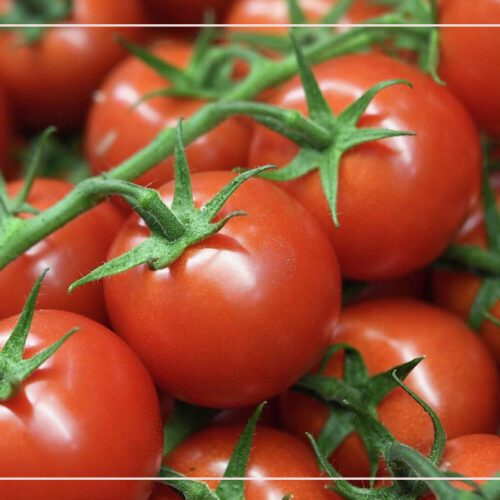
Climate Change and food shortage
2020 will go down in history as the year of the coronavirus pandemic. But the head of the UN food program has warned of another threat on the horizon. In this article, we will explain the mutual influence between climate change and food shortage.
“At the same time we are dealing with the Covid-19 pandemic, we are also on the edge of a hunger pandemic.”
Hunger pandemic:
Over 700 million people went without enough to eat in 2019, and the United Nations has warned another 132 million could be added to that number the very next year. Covid-19 has exacerbated the problem but even before the pandemic, hanger was on the rise. Many factors also play an essential in this problem like poverty, growing population, disease, conflict, and many others. Unfortunately, the most catastrophic factor is climate change.
The climate crisis could lead to over 183 million people facing hunger by 2050 as our warming planet affects how food is grown and distributed.
Climate change and food production:
Many of us wonder how climate change could affect food industries. How is it linked to who eats well and who doesn’t? As we struggle towards a greener post-Covid world, what changes we must make to ensure hunger doesn’t become the next pandemic?
“When we talk about climate change, we often talk about the impact of climate that is going to have on human society or the environment in the future.”
The number of climate change-related disasters; like extreme heat waves, droughts, and floods, has doubled since the early 1990s. Harvests have been shrinking and crops have been ravaged by pests like the enormous worms of locusts that devastated east Africa. Furthermore, plant diseases are becoming harder to predict. Especially that they move with changing climate and appear in areas they were not seen before.
Less nutritious food:
Climate change is also making food less nutritious. When crops like wheat, corn, rice, and soy are exposed to extra amounts of Co2 at the level predicted for 2050, the plants lose as much as 10% of their zinc, 5% of their iron, and 8% of their protein content.
The oceans are affected too. As the water gets warmer, it’s forcing fish that prefer certain temperatures to move to new areas. As a result, whoever rely on fish to eat would be obliged to find new sources of food in the future.
Rising temperatures also mean regions that were once suitable for growing particular crops are not anymore. Job opportunities will become scarce or there will be no livelihood anymore to work on a farm or to own a farm. As a result, people will leave rural areas and go to cities and try to find different kinds of wage-earning jobs.
As it becomes harder to get a good harvest from existing farmland and the population and demand for food grows, farming has expanded to the forest. Brazil’s Amazon is a clear example. Furthermore, the forest is cleared for agriculture, conditions become warmer and drier which has led to worsening droughts.
Climate change impacts on water:
Agriculture uses 70% of the world’s freshwater which is becoming scarcer. In most parts of the world, far too little is known about groundwater supplies and how to use them sustainably to water plants and crops.
In sub-Saharan Africa, only 1% of the cultivated land is equipped for groundwater irrigation compared to 14% in Asia. But in other countries, too much water could be a risky problem due to the high probability to have cyclone storms or unexpected floods.
How does climate change affect who can access food and who can’t?
It’s going to be harder to get access to a healthy diet. Plus, the cost of food will go up.
Among the people most likely to suffer from food shortage are the poor communities in cities that may not have the money to compete.
It could impact those who produce food too. Subsistence farmers grow crops just for themselves and their families. Extreme weather and pests could see whole crops wiped out leaving them with nothing.
On a global scale, countries that depend heavily on food imports like wheat and rice could also suffer. Especially if global food supplies fall short and exporting countries are forced to keep more food for their people.
RELATED TOPIC: Let’s Protect Our Forests
What changes can be made?
As we look to rebuild a greener post-Covid, one of the surest ways is to shift people’s diets to include more plant-based food. “The food that we grow and eat is significantly affected by climate change. At the same time, food systems can be an effective contribution to climate change environmental degradation.”
The global food system created about a quarter of the greenhouse gas emissions. Food systems alone would prevent us from achieving the 1.5° climate change target within 30-45 years.
Meat and dairy production has the biggest carbon footprint because of the huge amounts of grain, water, and land they require to produce. Eating less of both can help ensure there’s enough food for everyone and cut planet-heating emissions.
As the threat to harvest increases, one solution is to increase their diversity, new drought and flood-resistant crop varieties are also being developed. They are used more widely through their success can also depend on good seasonal weather forecasting.
Countries highly vulnerable to hunger and climate change often have few resources to help them to adapt. It means that financial support is also important.
What is the real challenge?
The impact of climate change on food security is deepening inequalities on our planet.
What we need to think of is how to build an effective integral system based on resilience and diversity. Not like these vulnerable modularity that works well when everything works as planned. but collapse when any problem occurs.
You can now check the full list of Environmental Products
produced by Almardia Group
Common Questions
-
Does climate change cause hunger?
One of its most catastrophic impacts, climate change is a major cause of global hunger today and disrupts food production. More frequent and more intense natural disasters destroy crops. For example, droughts, floods, or unpredictable weather patterns make it very challenging for farmers to plan for a successful harvest.
-
How does climate change affect poverty and hunger?
As a result of climate change, the price of food would increase, and access to food become more difficult putting many societies at higher risk of hunger.
-
What are the 4 main causes of hunger?
- Inequity.
- Poverty.
- Conflict.
- Climate Change.





